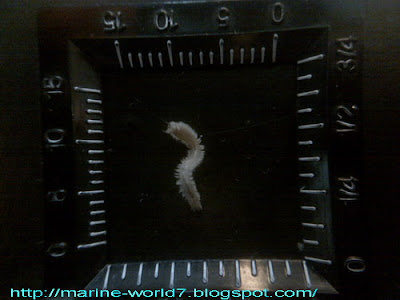Friday, December 23, 2011
Friday, December 2, 2011
Great cormorants (Phalacrocorax carbo) in the Caspian Sea
Phylum: Chordata
Class: Aves
Order: Pelecaniformes
Family: Phalacrocoracidae
Genus: Phalacrocorax
Species: Phalacrocorax carbo
Class: Aves
Order: Pelecaniformes
Family: Phalacrocoracidae
Genus: Phalacrocorax
Species: Phalacrocorax carbo
These are Great cormorants (Phalacrocorax
carbo). They have been found off the coast of Tonekabon, south of Caspian
Sea. In Tonekabon the species can be found during of all seasons but they are
most often seen in autumn and winter.
Great cormorants (Phalacrocorax carbo) are one
of the most widespread of cormorant species, with a
cosmopolitan distribution. Great cormorants are found throughout Europe, Asia,
Africa, Australia, and in northeastern coastal North America.
Ecology Behaviour: Throughout its range
the species is sedentary or locally dispersive, with northerly populations also
making strong migratory movements. The timing of breeding varies
geographically, occurring all year round or coinciding with
the rains in the tropics and peaking between April and June in the
temperate regions of the Northern Hemisphere. The species breeds in
mixed-species colonies of 10-500 pairs (occasionally up to 1,000
pairs), the size of the colony depending upon the extent of nearby feeding
areas. It is usually a solitary feeder but may form large fishing flocks
in some areas.
Habitat The species
frequents both coastal and inland habitats. In marine environments it occurs in
sheltered coastal areas on estuaries, saltpans, coastal lagoons, mangrove
swamps, deltas and coastal bays, requiring rocky shores, cliffs and islets
for nesting but generally avoiding deep water and rarely extending far
offshore. It also inhabits fresh, brackish or saline inland wetlands2 including
lakes, reservoirs, wide rivers, flood waters, deep marshes with open water,
swamps and oxbow lakes, requiring trees, bushes, reedbeds or bare ground for
nesting and avoiding overgrown, small, very shallow or very deep waters.
Photographer: M. Sepehr
Location: Caspian Sea - Iran
-mazandaran - tonekabon
References
Friday, November 11, 2011
Laurencia caspica (Red Seaweed) in the Caspian Sea
These are Red algae (Seaweed)
in the south of Caspian Sea. I found in the
Tonekabon Township one year ago. This species has not yet been identified. Iranian Researchers said they could not identified. They
live on seashores and in the shallow waters of Caspian Sea. They are mainly
found on wave-washed rocks (boulders) and underwater on the cobbles. This species
is only found in west Tonekabon Township. Now, I posted them to Professor M.D. Guiry of Ireland
http://www.seaweed.ie/guiry/
http://www.seaweed.ie/guiry/
I'm Hope; they are new
species in the south of Caspian Sea
Phylum: Rhodophyta
Class: Florideophyceae
Order: Ceramiales
Family: Rhodomelaceae
Genus: Laurencia
Species: Laurencia caspica
http://www.algaebase.org/search/species/detail/?species_id=2610
Photographer: M. Sepehr
Location: Caspian Sea - Iran -mazandaran - tonekabon
Phylum: Rhodophyta
Class: Florideophyceae
Order: Ceramiales
Family: Rhodomelaceae
Genus: Laurencia
Species: Laurencia caspica
http://www.algaebase.org/search/species/detail/?species_id=2610
Photographer: M. Sepehr
Location: Caspian Sea - Iran -mazandaran - tonekabon
Saturday, September 24, 2011
Egretta garzetta in the Caspian Sea
Phylum: Chordata
Class: Aves
Order: Ciconiiformes
Family: Ardeidae
Genus: Egretta
Synonyms: Egretta garzetta
Photographer: M. Sepehr
Location: Caspian Sea - Iran -mazandaran - tonekabon
Location: Caspian Sea - Iran -mazandaran - tonekabon
Reference
Friday, June 10, 2011
Caspian Sea
The Caspian Sea is the biggest enclosed body of water on Earth, having an even larger area than that of the American Great Lakes or that of Lake Victoria in East Africa. It is situated where the South-Eastern Europe meets the Asian continent, between latitudes 47.07’N and 36.33N and longitudes 45.43 E and 54.20E. It is approximately 1,030 km long and its width ranges from 435 km to a minimum of 196 km. It has no connection to the world’s oceans and its surface level at the moment is around –26.5 m below MSL. At this level, its total coastline is some 7,000 km in length and its surface area is 386,400 km2. The water volume of the lake is about 78,700 km3. The water of the Caspian Sea is slightly saline; if we compare the Caspian water with oceanic water, it contains 3 times less salt.
Photographer: M. Sepehr
Location: Caspian Sea - Iran -mazandaran - tonekabon
Reference
http://www.caspianenvironment.org
Monday, May 30, 2011
Saturday, May 28, 2011
What Is Environmental Sensitivity Index (ESI) Maps?
ESI maps provide a concise summary of coastal resources that are at risk if an oil spill occurs nearby. Examples of at-risk resources include biological resources (such as birds and shellfish beds), sensitive shorelines (such as marshes and tidal flats), and human-use resources (such as public beaches and parks).
When an oil spill occurs, ESI maps can help responders meet one of the main response objectives: reducing the environmental consequences of the spill and the cleanup efforts. Additionally, ESI maps can be used by planners--before a spill happens--to identify vulnerable locations, establish protection priorities, and identify cleanup strategies.
| Shorelines on ESI maps are color-coded by sensitivity to oil. Symbols mark localized areas for biological and human-use resources. |
|
Reference
|
Tuesday, May 17, 2011
Tuesday, April 19, 2011
Palaemon adaspersus in the Caspian Sea
Phylum: Arthropoda
Class: Malacostraca
Order: Decapoda
Family: Palaemonidae
Genus: Palaemon
Synonyms: Palaemon adaspersus
Photographer: M. Sepehr
Location: Caspian Sea - Iran -mazandaran - tonekabon
Location: Caspian Sea - Iran -mazandaran - tonekabon
Reference
http://animaldiversity.ummz.umich.edu/site/index.html
Tuesday, April 12, 2011
Tuesday, March 1, 2011
Mytilus in the Caspian Sea
Phylum: Mollusca
Class: Bivalvia
Order: Mytiloida
Family: Mytilidae
Genus:Mytilaster lineatus, (Gmelin, 1791)
Synonyms: Mytilus
Photographer: M. Sepehr
Location: Caspian Sea - Iran -mazandaran - tonekabon
Location: Caspian Sea - Iran -mazandaran - tonekabon
Reference
http://www.caspianenvironment.org
Subscribe to:
Comments (Atom)








































